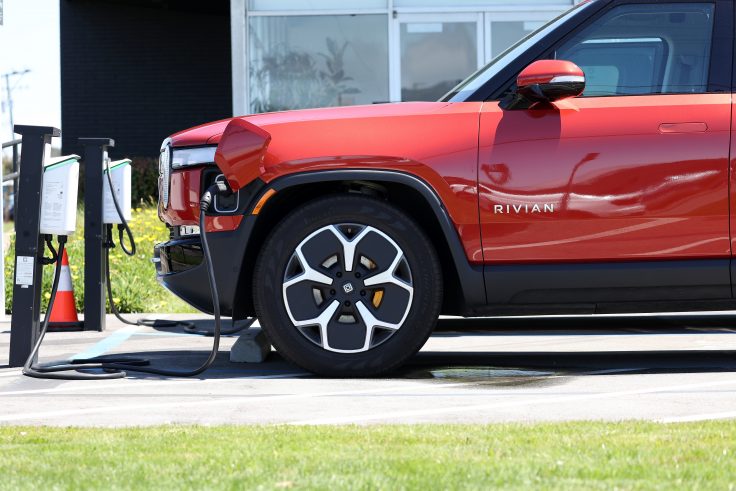Soaring electricity prices have nearly doubled cost to charge EVs since 2022

As California pushes consumers to drive electric vehicles, the state is also moving away from fossil fuels, making electricity—and charging those vehicles—more expensive.
California has ushered in a nearly 70 percent spike in electricity costs since 2010 when the state began its big break from fossil fuels due to its cap-and-trade regulations, mandates on utilities to procure higher-cost renewable energy, crackdowns on oil and gas, and taxpayer subsidies for solar panels. And while Californian households use less electricity than residents of other states, their rates are nearly 63 percent higher than the national average.
Now the price hikes are hitting EV owners, in some cases nearly doubling the charging costs since 2022, even as regulators ready a 2035 ban on the sale of gas-fueled autos. EVs still represent just a fraction of the cars on the road—just over 903,000 of California’s 14.3 million registered automobiles were electric as of 2022. The soaring costs come as President Joe Biden models his own administration’s green energy policies on California’s, with an aggressive target to cut carbon emissions, and push for electric freight trucks and EV sales. But critics of California’s renewable energy push say it’s ultimately an example of the state’s myriad climate policies undermining one another.
“Policy choices have driven up electricity prices in California, which is completely inconsistent with their desire to put people into electric vehicles,” said Wayne Winegarden, a senior fellow at the Pacific Research Institute.
Others say the dilemma is another sign California may be barreling toward a dead end with its goals of eliminating gas and diesel vehicles while powering the electric grid with renewable sources like wind and solar.
“To convert California’s transportation fleet to all-electric … you’re going to have to drastically increase electricity supply—and they don’t have any idea how to do it,” said Edward Ring, cofounder of the California Policy Center and longtime energy policy analyst.
Ring noted that most of California’s total energy supply still comes from fossil fuels, according to federal figures, with the transportation sector accounting for most oil and gas consumption. Any major shift to the electrical grid in a significant way could easily overburden the system—a problem compounded by the state’s mandated goal of making the grid 100 percent carbon-free by 2045. Solar and wind power account for just 17 percent and 8 percent of the California grid respectively, and the push to fully electrify the state with renewables would require a 74-fold increase in energy generation.
“If we electrify all of our end use, where will we get all that power?” Ring asked. “It’s absurd to think we can get that much electricity from wind and solar.”
In an effort to combat this supply problem, Governor Gavin Newsom in 2022 backed and signed legislation to let California’s last nuclear plant remain open, at least temporarily, after it was scheduled to shutter. Though widely condemned by many powerful environmental interests, nuclear power is carbon-free and accounts for nearly 10 percent of the state’s energy.
Meanwhile, California leaders are trying to handle soaring costs of offshore wind through more potential subsidies: Newsom last year signed a law authorizing California to buy offshore wind electricity, regardless of its cost, to guarantee a market for the wind energy companies tapped to build giant floating wind farms—a policy that will further hike power prices. Elsewhere, wind industry players are canceling major projects as other countries and states grow increasingly reluctant to subsidize them.
And Newsom and the California utility commission are touting a widely panned plan to switch households to an “equitable” income-based electricity billing system on the grounds it will help EV owners by no longer charging them based on usage.
The prospect that pricey electricity could scare Californians off the EV market has prompted hand-wringing among environmentalists who want people to ditch gas cars, the San Francisco Chronicle reported this week. EVs, meanwhile, pose their own environmental problems. They wear out tires, which contain toxic pollutants, up to 20 percent faster than gas cars. And sourcing their battery components brings major ecological damage from mining lithium—a process that depletes water tables and contaminates soil—as well as cobalt and copper. Most of the copper supply comes from open strip mines that ruin topsoil, vegetation, and wildlife habitats, while cobalt is primarily sourced from the Democratic Republic of Congo, where children are largely tasked with mining the toxic substance under dangerous conditions.
Winegarden said the electric car market still has one major pro: California’s highest-in-the-nation gas prices, driven up by taxes and regulations.
“Lucky for them, gas prices are expensive too,” he said.
Original News Source – Washington Free Beacon
Running For Office? Conservative Campaign Management – Election Day Strategies!
